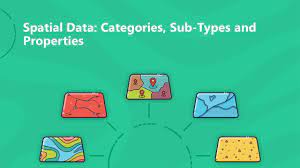Where can Australians find spatial data? The government of Australia has its own agency whose main role is to collect, manage, and use spatial data. The government website has a number of resources available to researchers, business, and the general public. The National Map offers a wealth of information and maps related to Australia. The ANZLIC is the peak intergovernmental body for the collection, management, and use of spatial information.
The government is one of the largest data collectors in Australia, and is responsible for collecting data from various departments and functions across the country. Unfortunately, there are few centralized databases and a lack of easy access to spatial data. Despite the importance of these data sets, Australia has no comprehensive spatial data infrastructure. As a result, the government is not able to use spatial information effectively, which hinders its ability to streamline services, leverage resources, and improve processes.
The Australian Spatial Data Directory is an example of this. The National Map is maintained by Geoscience Australia and collaborates with CSIRO’s Data61 for data management and software development. The Government is one of the largest data collectors in Australia, but there is no easy way for the general public to access these data. The Australian Government’s report, commissioned by the University of South Australia, highlights the lack of accessibility, compatibility, and uniformity of spatial information across government agencies.
The Australian Spatial Data Infrastructure is a national framework for linking government departments to spatial information. It’s similar to the railway system or the national highway network. It is a network of people, policies, and technologies that allows users to gain access to spatially referenced data for a wide variety of purposes. The Australian Government supports the use of this information for the benefit of all citizens, including government agencies, the private sector, nonprofit organizations, and academia.
The government is one of the largest data collectors in Australia, gathering information for all departments and functions. Unfortunately, there is no centralised data infrastructure or way for the public to access and use spatial data. In addition, the government’s data collection is not harmonised and not compatible with other data sources. Currently, the Australian Government has an SDG reporting platform. Nevertheless, these challenges remain. The availability of spatial information is essential for efficient public services and a better quality of life.
The Australian Spatial Data Infrastructure is a national framework for spatial information. It links users with spatial information. The infrastructure includes people, policies, and technologies to make the data accessible to everyone. The Australian Government has adopted the INSPIRE standards to provide common and harmonised spatial information. There are no national or regional standards and regulations for spatial data. The development of an INSPIRE-based network is a major step towards a thriving and unified Australia.
Accessibility and compatibility are the most crucial requirements for spatial data in Australia. The government is one of the largest data collectors in Australia, but there is no centralized platform for public access. Having access to data is essential for effective public service. There are a number of ways spatial information can be shared. In this case, it can be accessed by anyone. However, the government has not yet fully embraced this standard.
The government is one of the biggest data collectors in the country, but there are many problems with the data. Its spatial data are not compatible with each other. The government needs to standardize spatial information to ensure that it is consistent. By standardising spatial data, governments will avoid confusion and avoid errors. Further, it will also help users and businesses to make better decisions. A well-integrated system can improve processes and streamline services.
Developing an Australian Spatial Data Infrastructure is a critical step towards a unified Australia. Like any nation, it has several challenges. The country’s spatial data lacks compatibility, accessibility, and consistency. It also lacks harmonised data. In some countries, this is a problem. In Australia, it does not meet the UN standards and has inconsistent data standards. Hence, it is essential to harmonise and synchronise the spatial data.








